The Nons SL42 is arguably the most important analogue camera to hit the market in recent years. And if the rumour of the demise of the F6 are true, the only mass produced SLR with interchangeable lenses in production. It however doesn’t use 35mm film. This bad boy shoots Instax. And whilst this has flaws this seriously changes the game

I’ve been trying to write the review for about 4 weeks but got stuck. This camera is a mass of contradictions. It is one part brilliant, one part flawed, part revolution, part repurposing. Another part cleverly innovative and another deeply frustrating. After about 90-100 shutter actuations mines broke. But the good folk at Nons replaced it within a few days.
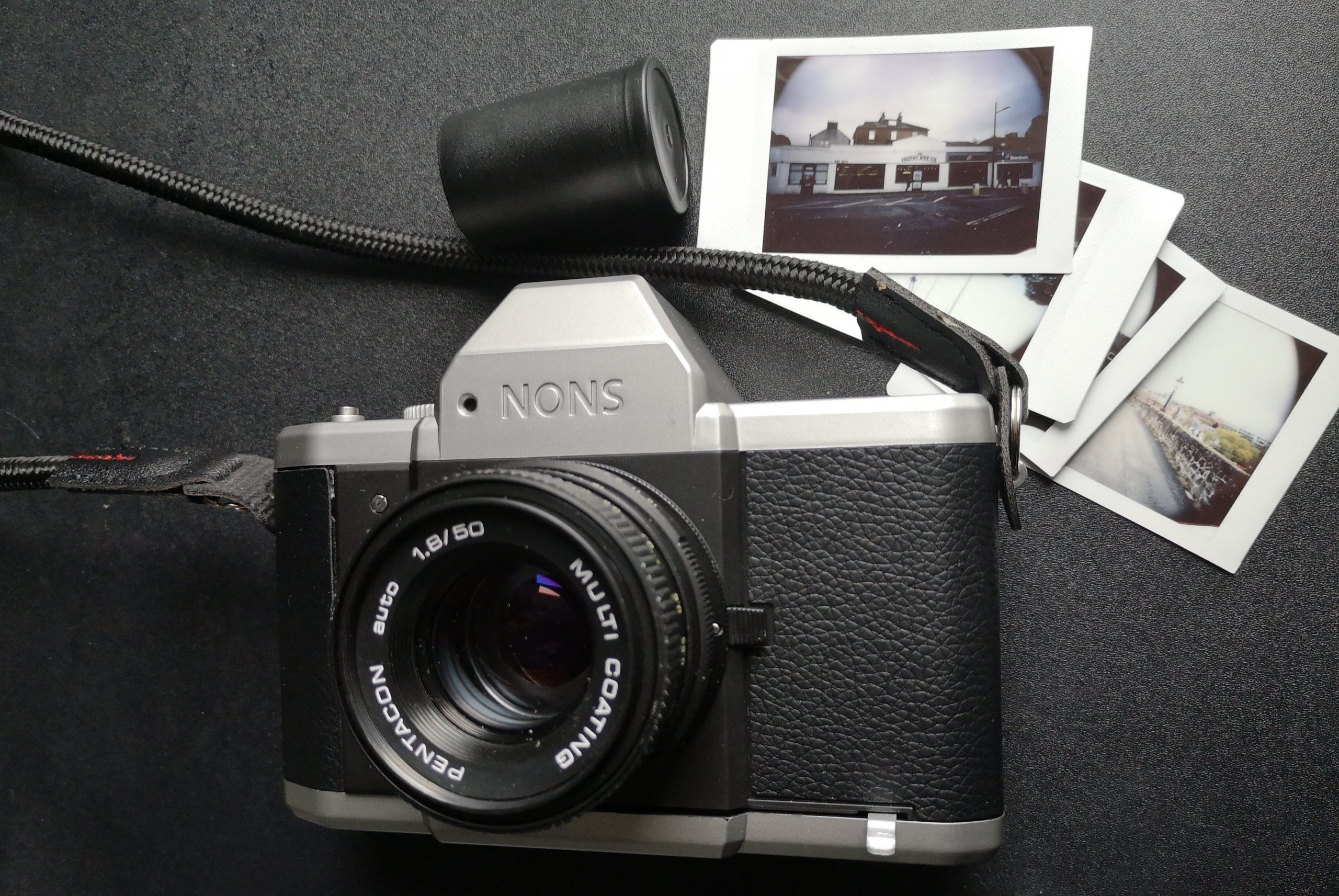
Film shooters have been crying out for a new camera since digital swamped the market back in the noughties. If the rumours of the demise of the Nikon F6 are true then for conventional roll film the only big players left are the legendary Leica and those Austrian Hipter upstarts Lomography.
And this arguably the most important analogue camera in over a decade, if you discount the glorious re-invention that is the Leica M-A.
The fall of the film SLR
The last 35mm system SLRs came in 2004 and the Nikon F6 was the last of those in production. Granted Lomography gave us the Konstructor – a DIY plastic SLR with a fixed lens and very limited control. Both Reflex and Ihagee have tried to give us new SLR. But the former has been lost in development hell and the latter failed to find enough backing.
Sadly the most advanced 35mm camera released in last 5 years is the re-booted mediocrity that is the Yashica MF-2 Super.

I’ll just let that sink in…
But there is an analogue format that has bucked the trend with dozens of new cameras from the likes of Leica to Lomography.
And now they have a SLR
Welcome to the world of Instant
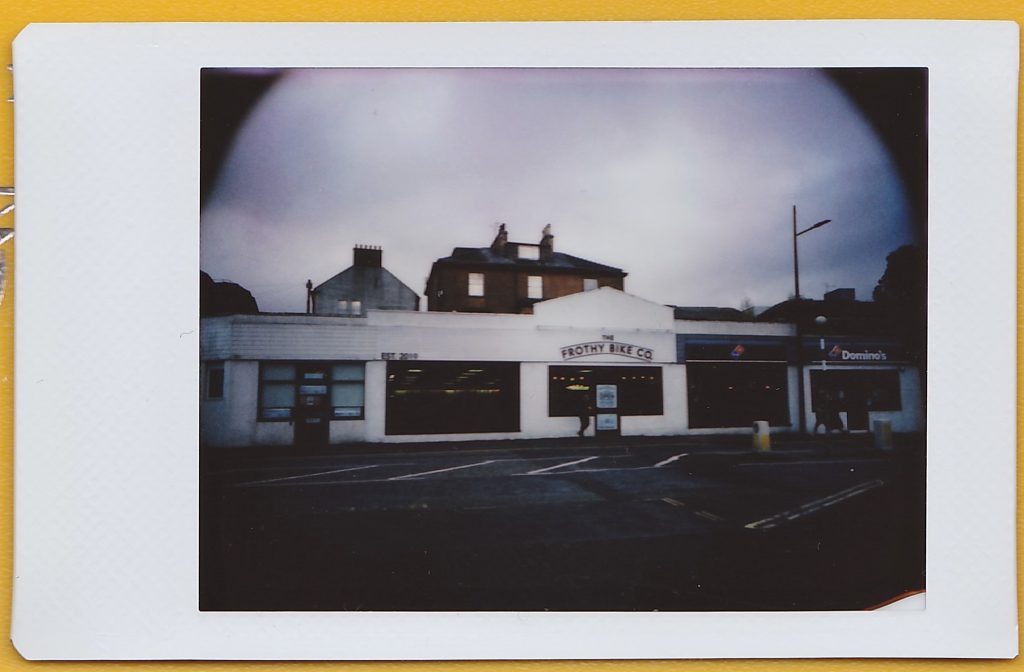
Instant World
If film based cameras have got stuck, Instant film has gown from strength to strength. It has even survived the rise of the smartphone much better than digital.
Fujifilm’s instax arrives in the 1990’s but have roots dating back to 1981. When Polaroid left instant photography in the early years of this century, Fujifilm saw a gap and seized it. Even in the digital age Joe Public still loves an instant print and for Fujifilm it’s a major cash cow. Instax cameras outsell their flagship X series CSC cameras. In 2018 they sold over 8.5 million instax cameras in just a 9 month period.
Their big rivals in the instax market are Lomography with their Lomo’instant and retro Diana Instant square ranges. But other players have leapt on from Leica to Mint. It’s a healthy market and Polaroid has returned. And there’s on going innovation. We’ve got instax TLRs, Rangefinders and even Digital hybrids. And this year saw 3 instax film backs for analogue cameras
But the SL42 gives us the first integrated Instax SLR
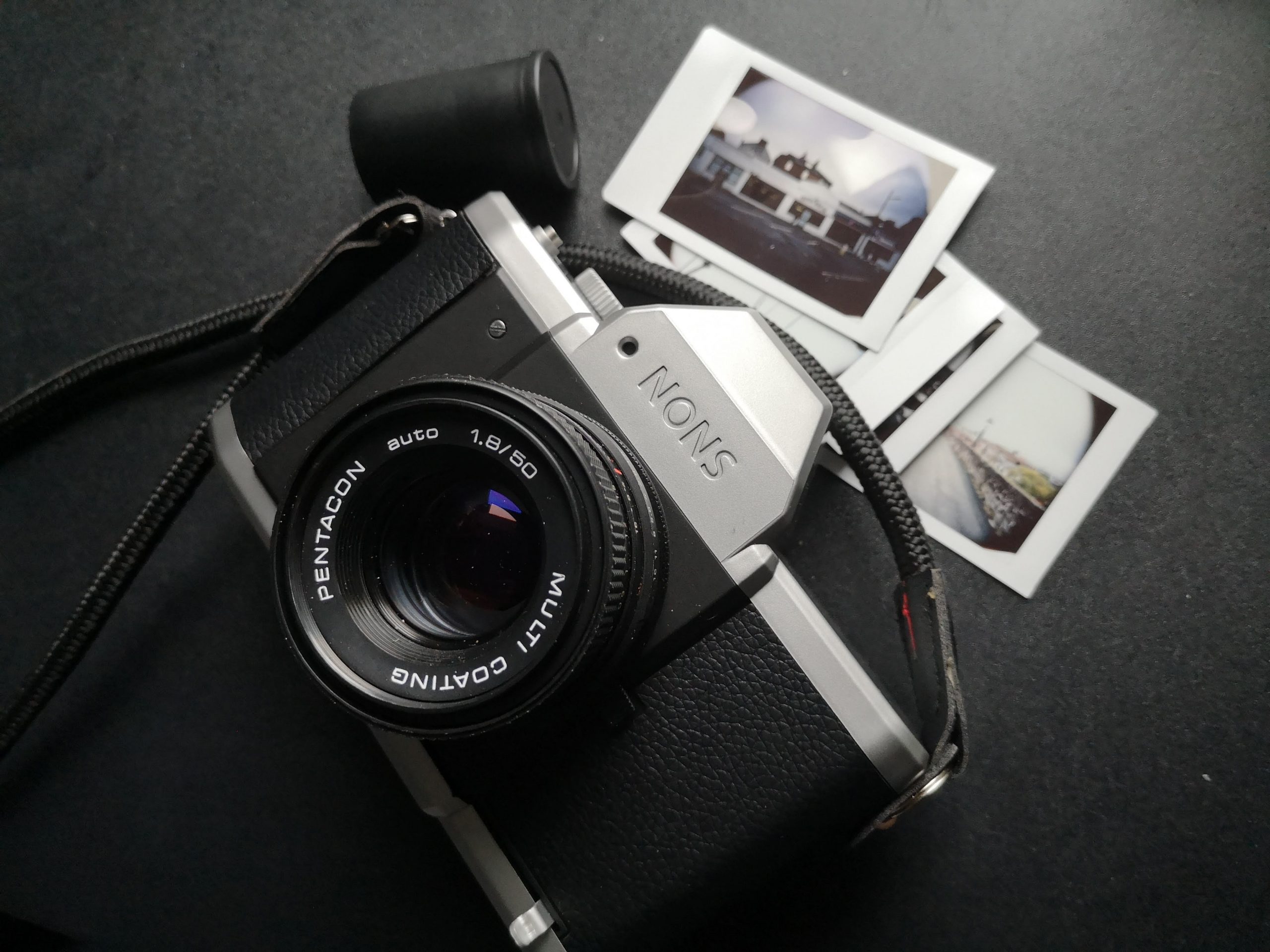
Nons ?
Bad name choice folks (it’s phonetically the word ‘Nounce’ which at best is British slang for idiot but actually has a second darker insult meaning). That aside Nons are a Hong Kong start up who rather brilliantly came up with new SLR from nowhere.
They’re also willing to listen to their backers and have been incredibly helpful. I can’t fault their aftersales. But as we’ll see I feel more like a beta tester than a backer of what should be a finished product.
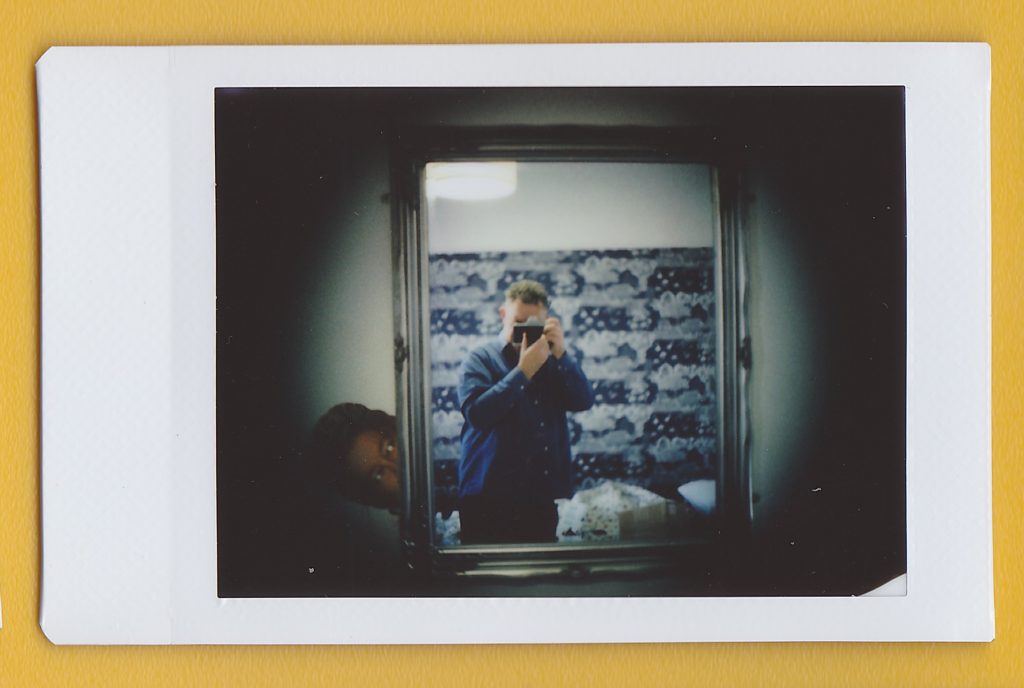
Instant Lens reflex
In fairness this isn’t the first instant SLR. Polaroid gave us the SX-70 in 1972 a camera that lives on today thanks to the efforts of Mint. This year we’ve also had backs for existing cameras with the Instant Magny 35 for 35mm, Escure Hassleback for Hassleblad and now the LomoGraflok for large format.
But this is the first self contained instax SLR and the first that instant film SLR with interchangeable lenses.
Expections managed
Before we discuss the spec, a bit of realism is needed. The camera cost me a meer $1400HKD (About £140) as an early backer. Currently Nons are selling it on their site and on amazon in the US for $320USD. That about £240 in the Queen’s English.
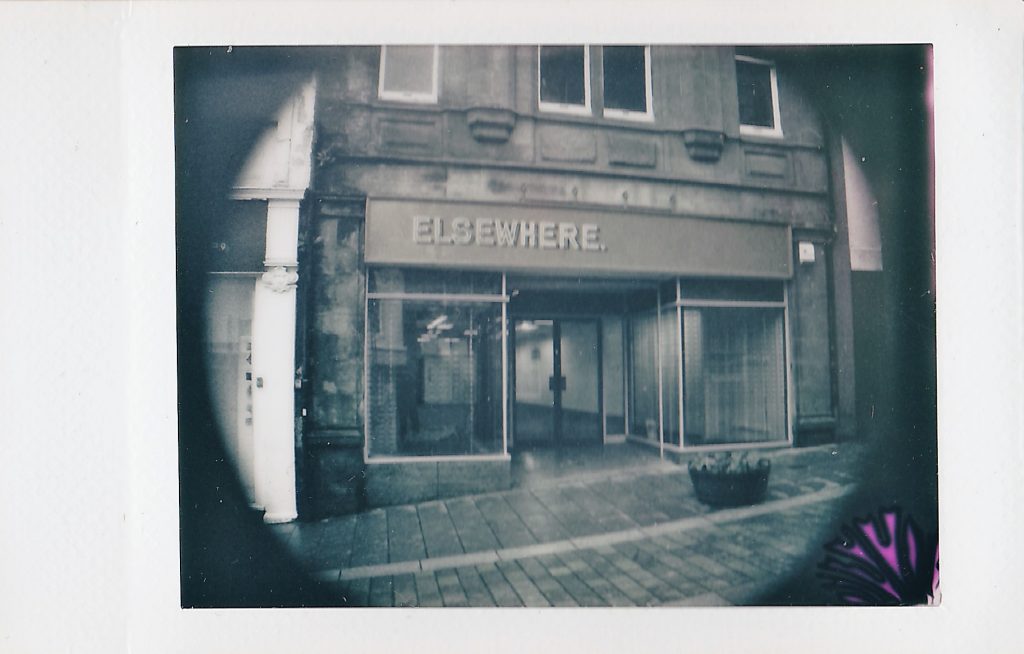
Sounds a lot but Mint sell their TLR and rangefinders for more (twice as much in the case of the Instakon RF70 cameras).
So don’t expect 3D matrix metering with a titanium bladed copal shutter in a space age alloy body. The Nikon F6 sold at almost $2700USD new if you want that.
The Nons SL42
The SL42 at its heart is a SLR using instax film but utilising existing lenses via adaptors to a Canon EF mount. As it uses by and large 35mm lenses which are geared to focus onto a 36×24 mm frame using a medium with a frame almost twice that (46mm × 62mm), you are going to get a lot of vignetting.
The camera uses a unique shutter design. Pressing the shutter button cause the leaf shutter which sits between mirror box and the lens mount to close. then the whole mirror box slides to the side (until then it had been acting as a light tight cover to the Instax). The shutter then opens briefly (only if powered) allowing you to take the shot. You must then manual re-cock the mechanism by sliding a lever below the lens.

The electronically controlled shutter has speeds from 1sec to 1/250 plus bulb. Nons intended the camera to have a 1/500 upper speed but couldn’t get their shutter to be consistent. Bravely they fixed speed to 1/250. But given instax film is 800 iso and with one of the narrowest dynamic ranges of any analogue medium, this creates a problem. You’ll need some ND filters for your glass
Build & Design
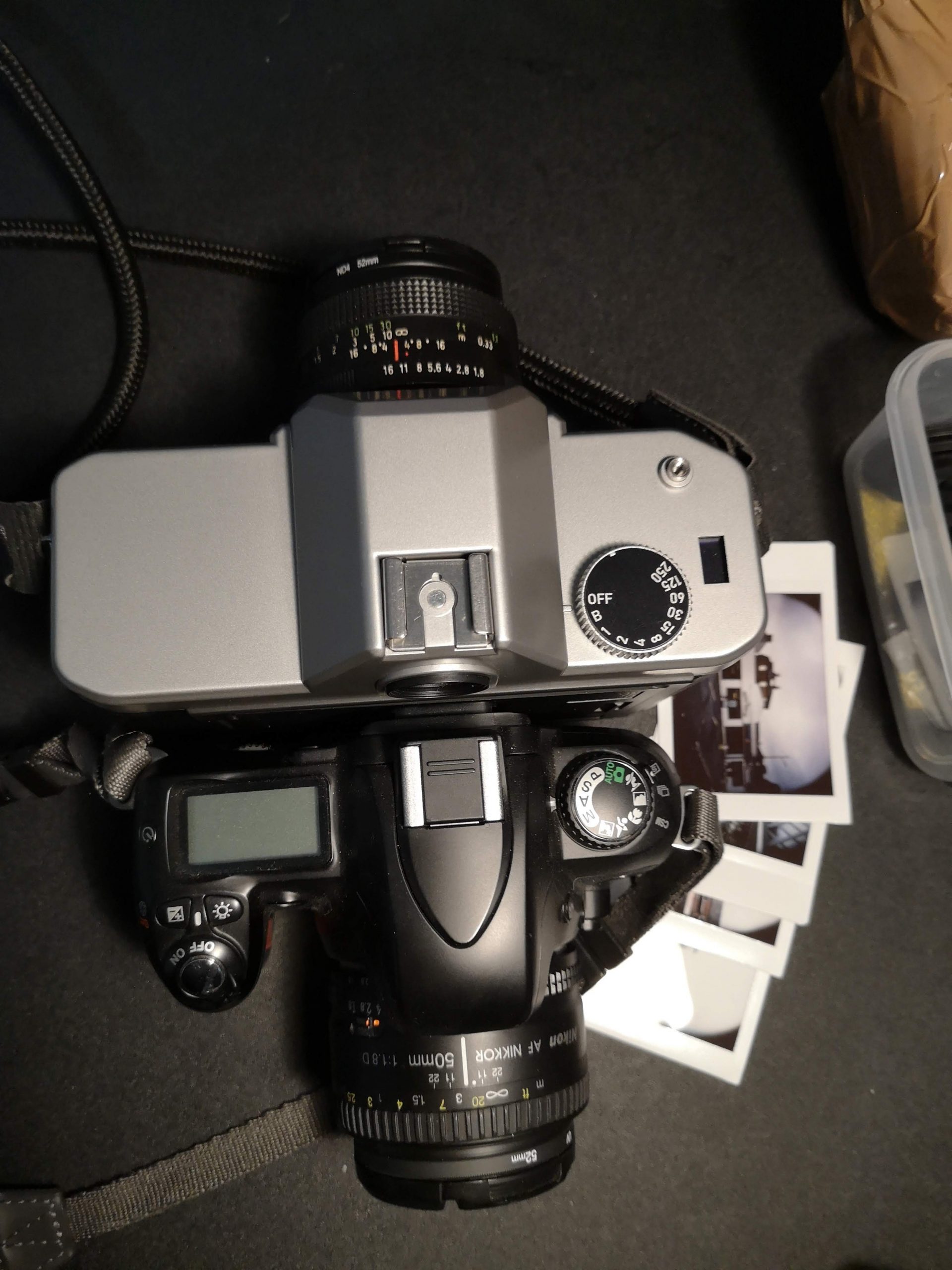
Nons went with classic SLR look. But on steroid and in plastic. This is a big camera dwarfing 35mm SLR but not quite the size of Kiev-6C 120 SLR. It comes in a 2 tone plastic deign with a leatherette like finish. Broadly this works IMHO as they picked a more grey silver than a bright on which would have made it look cheap. It does have a metal mount plate (more on that later)
There is a potential weak point with the battery cover which feels under incredible tension when loaded with the 2XAA needed to power the shutter. My first camera’s shutter re cocking mechanism also jammed
You’ll need 2 hands to wield it. That’s not because of it’s weight (at 456gms without film or batteries it’s lighter than a Nikon FM) . It’s down to the sheer size
Metering
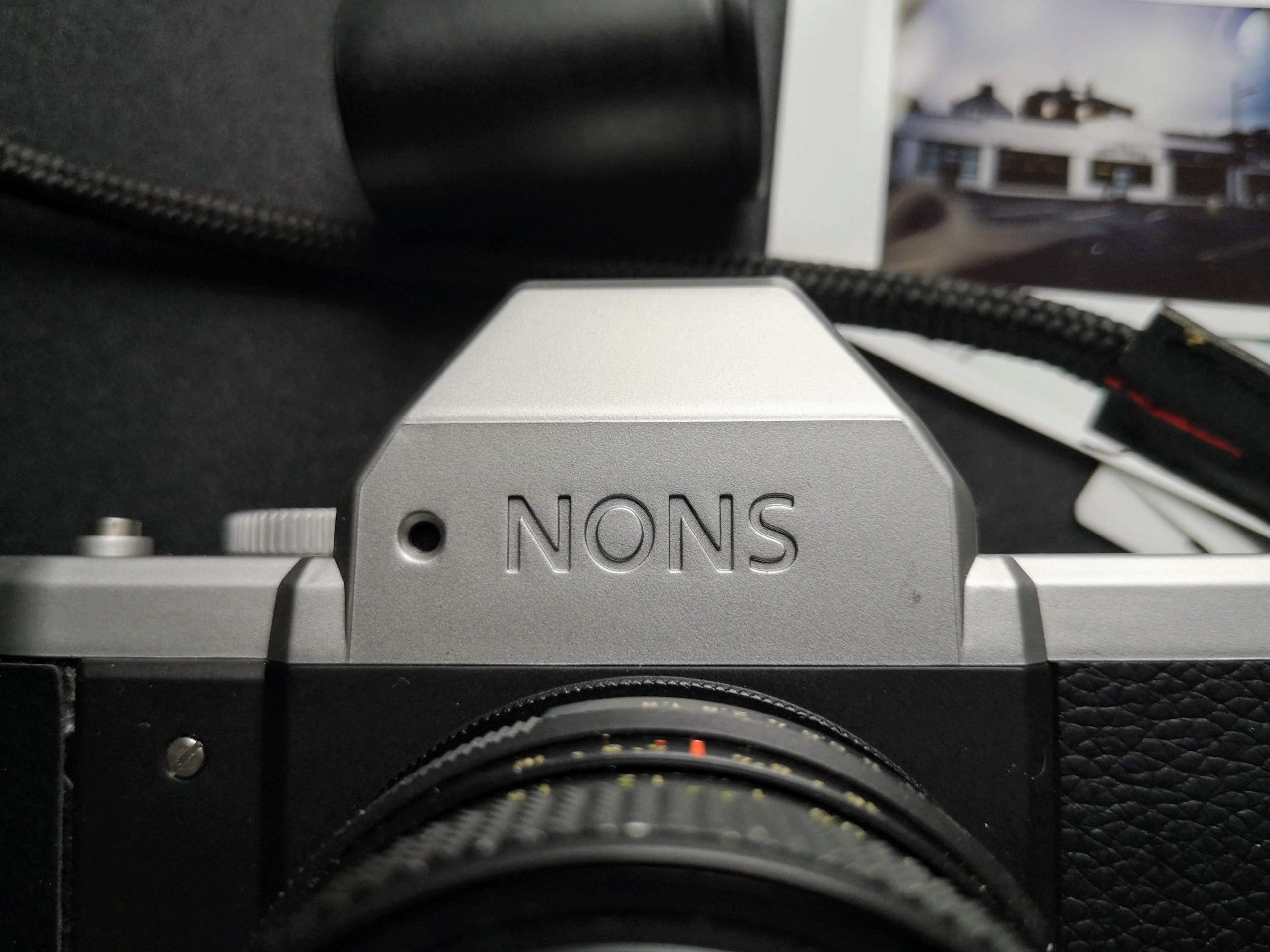
No TTL metering here. You get a meter positioned on the name plate that is in sync with the shutter speed. This displays a suggested aperture setting in a small but bright OLED LCD panel next to the shutter button. You will need to manually set the camera aperture.
The meter is as accurate as a hand held area meter. I tested it heavily with the Reveni Lab meter and it provided near identical results. It shows apertures from f/1 to f/22 only and there is no EV compensation which makes it of limited use in very bright light given the shutter speed limitations.
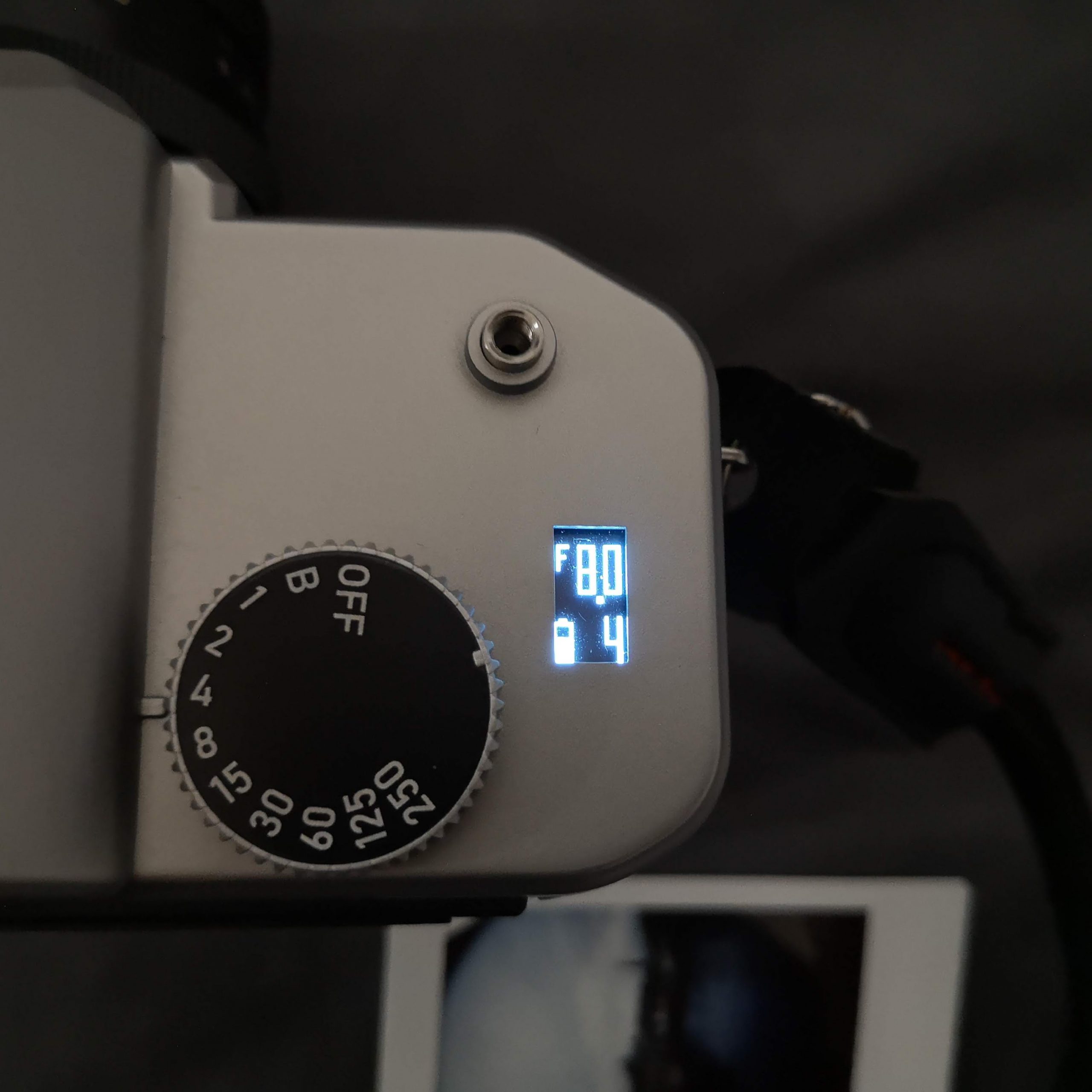
The display also shows a frame count and battery life. The latter is poor and I got the low light warning coming on about 25 shots with the provided average batteries. Chucking in some of Poundland’s posher batteries (Kodak Extralife Premium) I got less than 2 packs before this became an issue. It will not work with my rechargeables.
The mount

The camera was launched as the first M42 instax SLR. But as I’ve said Nons switched to the EF mount used in Canon’s film and full frame dSLR. That might seem an odd choice as the mount is passive and couldn’t electronically connect and use a EF lens. But the EF mount is one of the widest in the business. This allows you to easily mount not just M42 lenses but also Nikon F, Pentax K, Olympus OM, Canon FD and whole host of others lenses.
Be aware that these all can have a different flange distance (the distance form the mount to the film plane). Nons have not published the distnace on the SL42. M42 cameras have a focal flange of 45.46mm and EF mount has one of 44mm. So we’d assume one of those 2. Hopefully the latter as the first issue is that lenses that have a shorter focal distance will struggle to focus a infinity. longer flange distance lenses will be alright but the focus scale on lens may be skewed and inaccurate (making the viewfinder issue more of a problem).

The other issue is focal length will vary my Nikon E series 50mm would be sitting effectively about 2.4mm closer (allowing a 1mm for adaptor ring). This will impact the aperture making the lens slightly wider than the aperture stop shown.
Both these are minor issues but you need to be aware of them.
Viewfinder
Where do I begin. It was going okay ’til here.
You get a simple Frenzel lens screen. But boy is this hard to focus with ( I found holding the camera away a couple inches worked better). There is no focusing aid like a microprism or split screen. Its a little harder to focus than my Nikon or Canon AF bodies manually. It’s the second worse SLR/TLR screen I’ve used (after the Recesky DIY TLR clone)
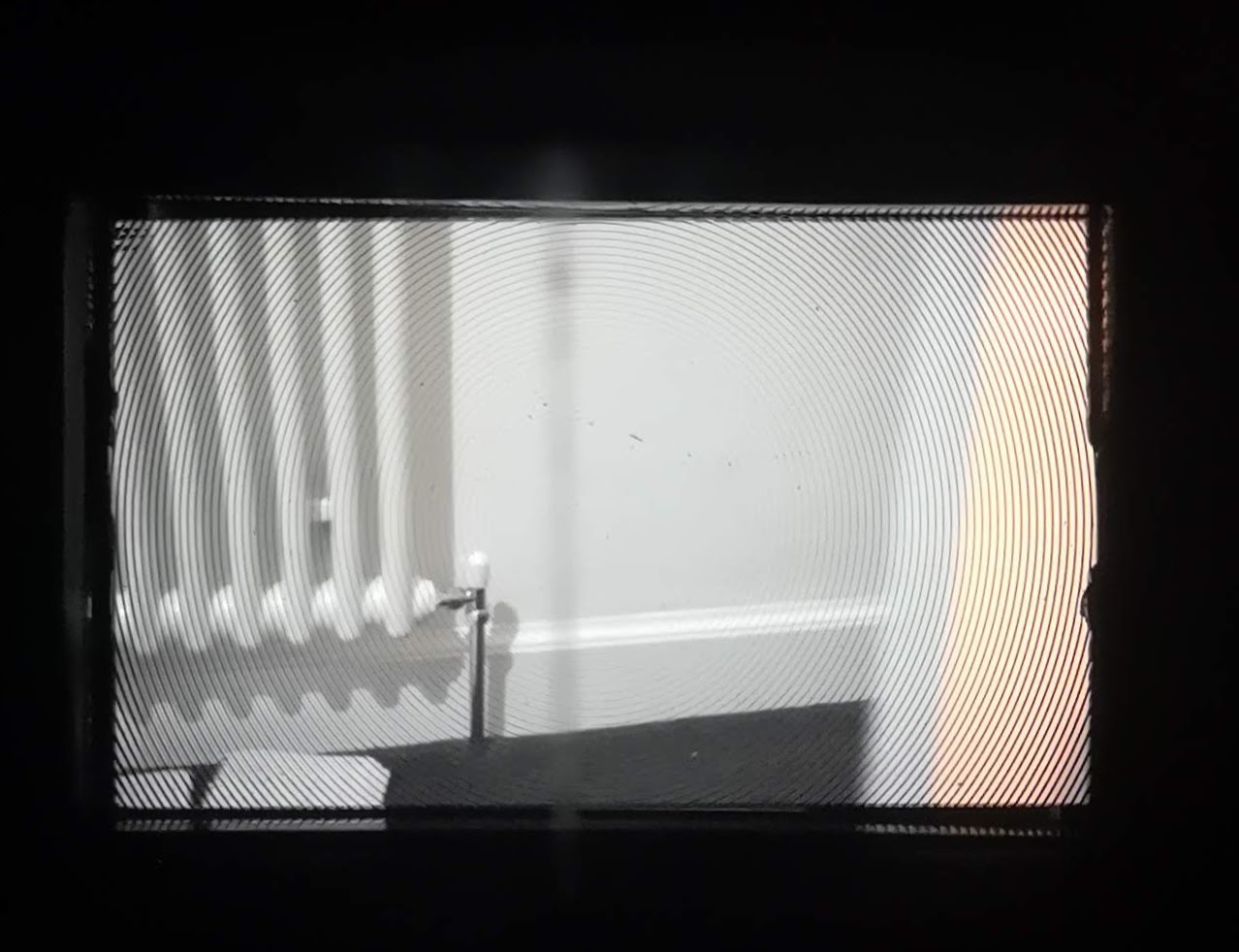
Nons blame this on using a pentamirror and indicate they’d like to use a proper prism. But it’s really down to the screen not the pentamirror.
The second camera had the same set up but was slightly better.
It also doesn’t cover the frame
Other Features
The Bulb mode is actually useful here as you have both a standard tripod and cable point. There is no timer function.
The SL4, is only the second Instax camera to offer external flashes after the Diana instant Square. This is an important plus here as that increases the capabilities quite markedly on paper.
But sadly neither Nons camera I’ve used work with any flash units I could try. This isn’t great for a new launch.
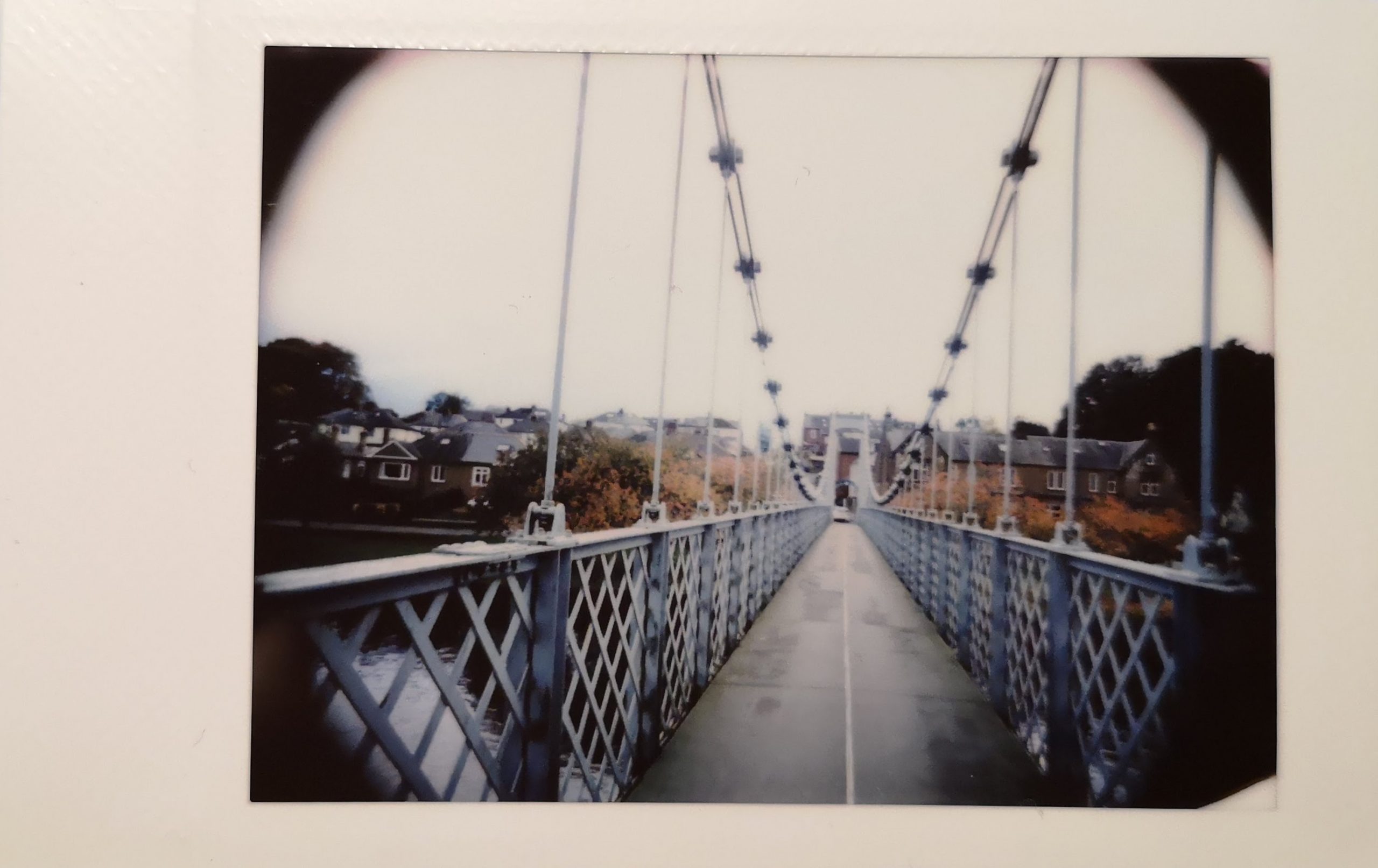
Using the Nons SL42
If you hadn’t twigged this is a bit like using a 1950 SLR. To stand any chance of focusing you must focus with the lens wide open, check meter and then stop the lens down to the required f/stop. This is likely to be a 5 step process – focus, check meter, set aperture, reframe & shoot.
The viewfinder makes this a pig to use and scale focusing isn’t an option due to flange differences.
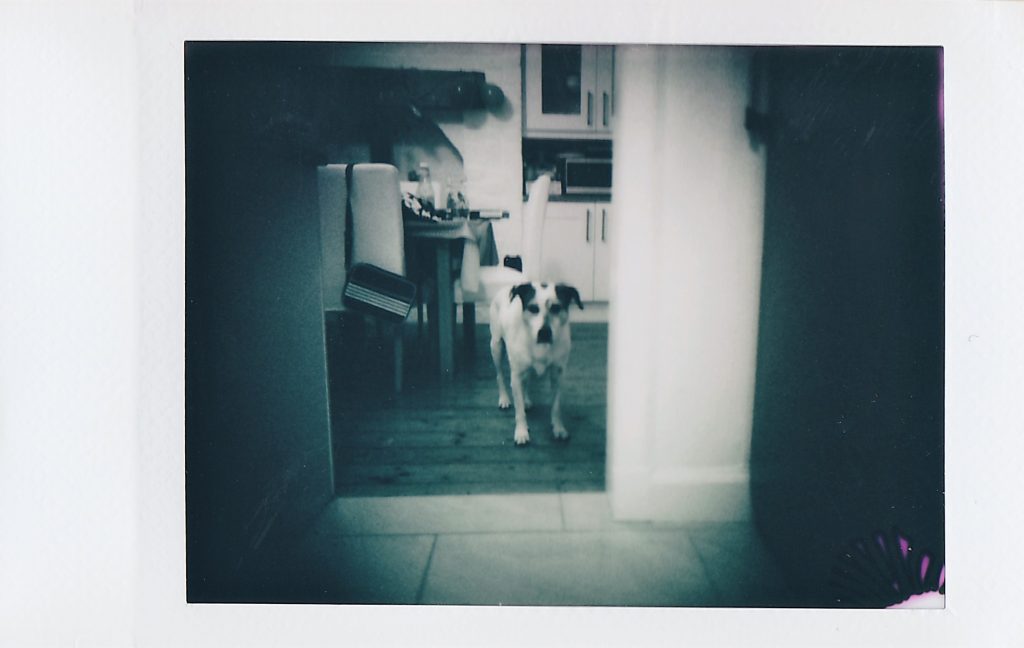
You need to eject the image separately by a button on the side of the camera which triggers a motorised eject system. this means you can easily do multiple exposures (intentionally or accidentally).
There’s a minor issue with my rollers, as you can see on the prints. They don’t quite spread the chemicals evenly to one of the top corners. I quite like the effect however.
The lens mount has been finished well enough. I had no issues mounting or removing lenses and their adaptors,
Instax Mini – Medium level difficultly
A word about the medium here. Instax mini has been around since last century and was the first instax type. The actual frame is 46mm × 62mm although each sheet is larger (54mm × 86mm). I prefer the Square format (62x62mm frame) personally. But that would have been a jump in camera with more lost frame.
This means you get vignetting using a 35mm frame lens
That’s just character. the main issue is that instax is only 800 ISO and has a notoriously minimal dynamic range which makes your average digital camera look like a positive tonal canvas in comparison.
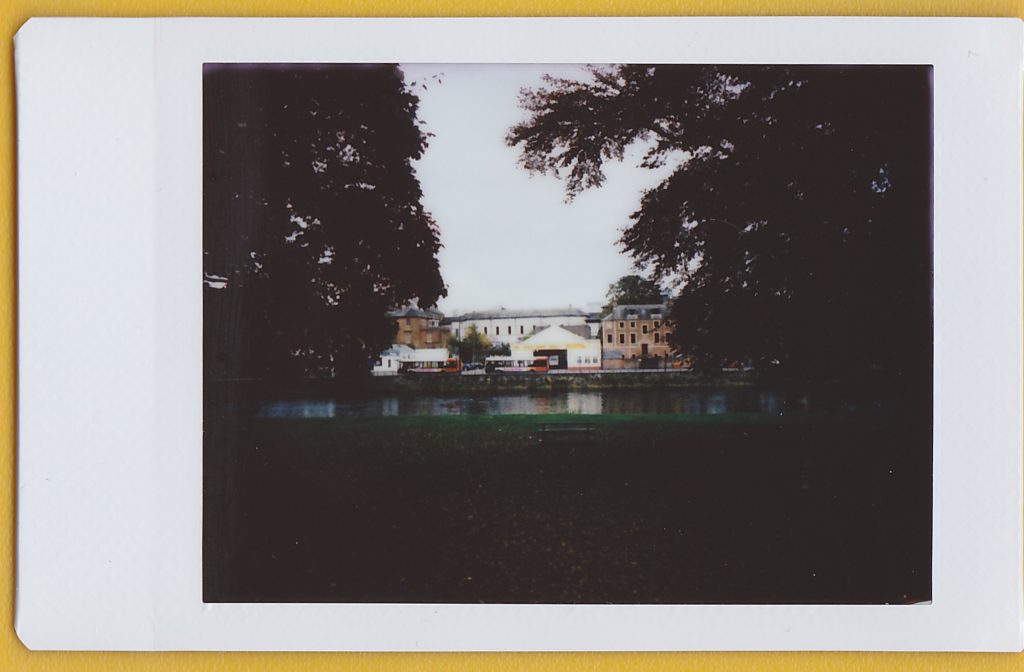
This makes it have very little margin for error. You need to bear this in mind when shooting. Forget shots like above you’ll ned to go for broadly average lighting across the whole scene.
Mini is at least Instax cheapest format. A 5×10 multipack will set you back under £35 from many online retailers. This makes a cost per shot of just under 65 pence. That’s not that much more than it would cost me shooting a roll of 24 exp Kodak gold and getting it lab processed and scanned (about 60p a frame). Granted Shooting a 36 exp roll drops that cost to under 50p but mini still gives you a physical print.*
Cost & Alternatives
My camera came with a whopping 40% discount at $1400HKD (about £140) as a Kickstarter early backer and included a body cap, reasonable M42 to EOS metal adaptor and a cheap strap. Nons sell it for £320USD before postage. For 15 bucks more you can get it with a 50mm 1:1.8 6 elements in 5 groups lens launched with the camera.
For comparison most of Lomography and Fujifilm instax cameras do not cost above the £140 mark in basic configuration. the only exceptions are the Fujifilm digital hybrids. these are all either scale or zone focus camera. You can get a Leica Sofort instax which is basically a tweaked Fujifiim Mini 90 that costs almost twice as much but offers little performance difference
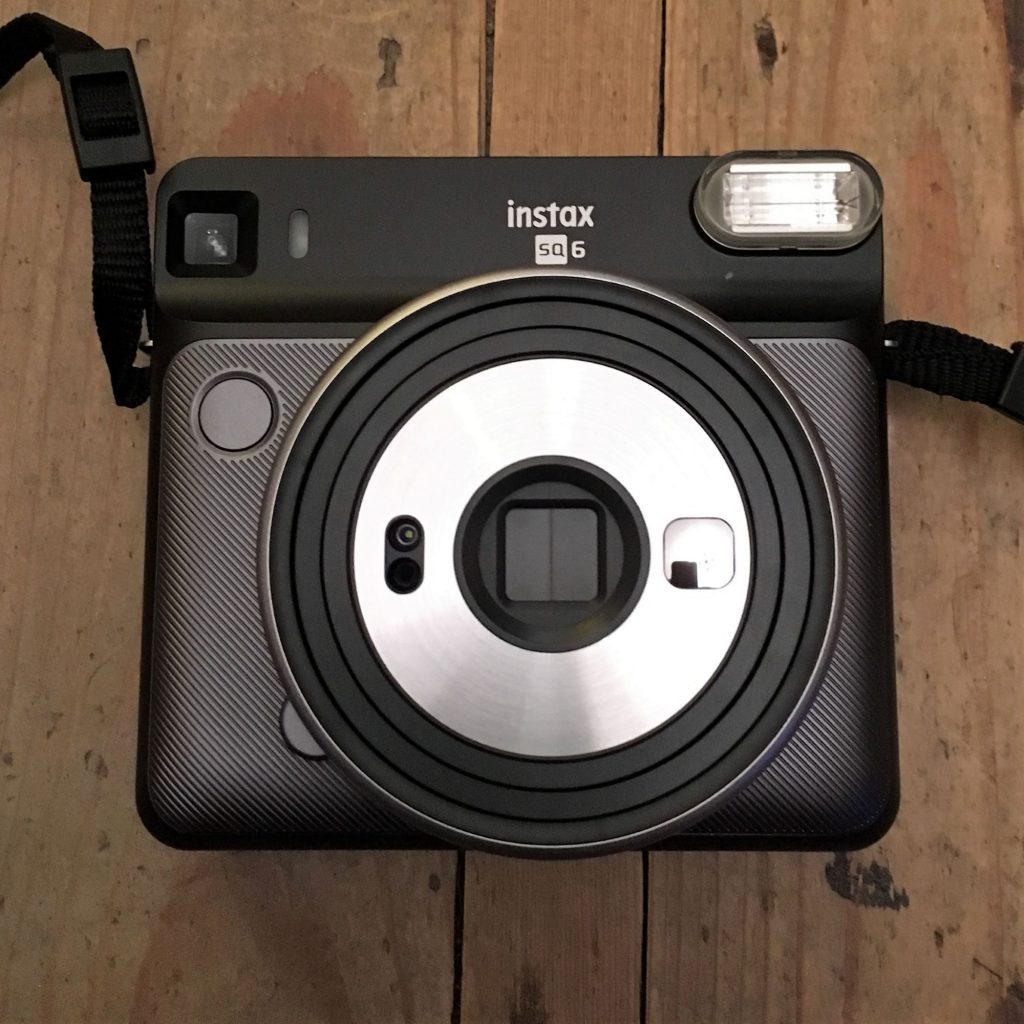
Mint TL70 and Rolleiflex instax TLR (basically the same camera) sell around the same cost as the Nons although some sights are discounting them below £300.
The TL70 is a well received camera in the Instax world with many positive reviews. It has a decent enough focus screen and tops out at 1/500 although most folk need to use ND filters
But it has a fixed lens as does the even more expensive mint InstantKon RL70 rangefinder.
Mint will sell you a refurbed polaroid SF-70 for about the same or their reworked version for more. these are SLR but again fixed focal length. You can of course chance the second hand market for a SX-70.
If money doesn’t matter it is worth checking out the Hasselback Portrait. This is an instax mini film back for some Hasselblad V-system cameras. No vignette and you use the cameras screen. But the back is £175GBP and Hasselblad gear is not exactly cheap. So you’re talking in the region of a grand to get this up and running. It can’t focus beyond 18ft and has yet to appear in the wild reading backer comments thanks partly to COVID-19.
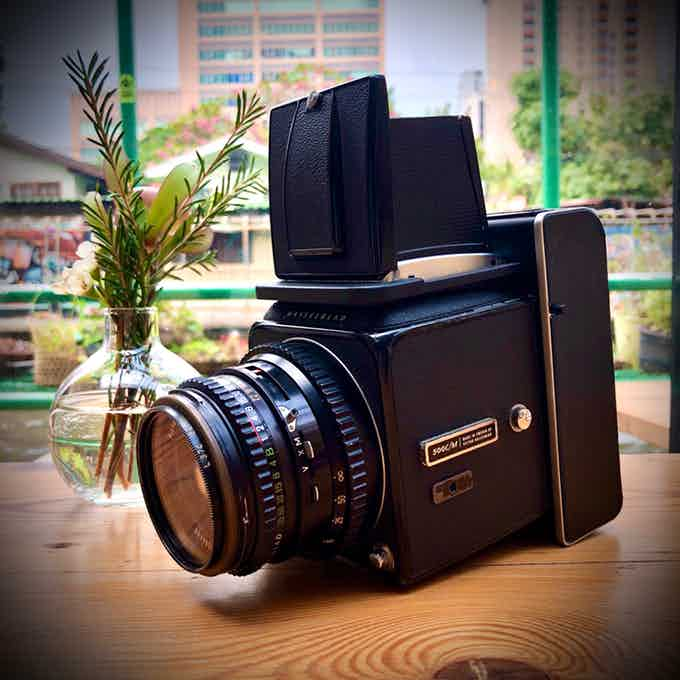
Final Thoughts
Nons deserve a pat on the back for this. They have got a all new analogue SLR to market. The camera has a innovative shutter mechanism and has allows for mind boggling lens support. It’s a quite revolutionary but…
But it is flawed.
As I’ve said it feels like us backers have been beta testers for a pre release model. There is a lot to like but there are 2 serious flaws – the non functioning flash circuit and woeful viewfinder. You kinda wish they had delayed a few weeks to properly test and sort these issues
Other flaws I can live with. The shutter speed could be faster, it’s a fankle to use, it eats batteries and I prefer Instax square but these aren’t deal breakers. The jury is out on reliability but I’m not reading a lot into my first camera’s failure
If they sort the big issues then this starts to be a realistic choice for the adventurous wanting to go instant. There is nothing like it on the market. the closest thing to this is using the Hasselback but that involves a pricey back and gear It also as yet hasn’t appeared.
But even if the SL42 issues are sorted, this is one for the experimental photographer. Instax mini as a medium is a cruel mistress. The camera needs to be set like a 1950’s SLR and you’ve a steep learning curve. That many of us can live with.
But the flash and viewfinder..
It needs to get sorted..
Reference notes
* Prices live on the 09/11/2020. Based on Amazon.o.uk & Analogue Wonderland current pricelist and processing cost excluding postage by AG Photolab. I receive commission from clickthrough sales at Amazon and I’m a shareholder with AG.

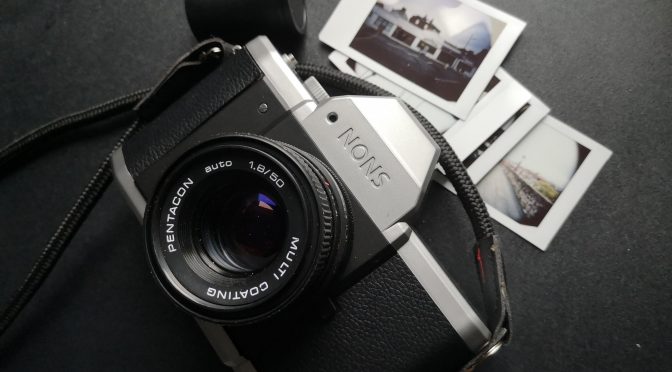
3 thoughts on “The line between genius and Madness -The Nons SL42 Review”